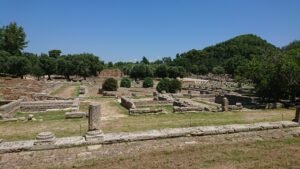 Olympia is one of the largest and most impressive archaeological sites in Greece. It’s true that the structures are not in great shape (e.g., no intact roofs), but the sheer number of ruins spread out across this expansive site and the fame of the place put it in the top tier of ancient Greek sites.
Olympia is one of the largest and most impressive archaeological sites in Greece. It’s true that the structures are not in great shape (e.g., no intact roofs), but the sheer number of ruins spread out across this expansive site and the fame of the place put it in the top tier of ancient Greek sites.
The site is found in a grove of plane and olive trees called the Altis, which was originally settled around 2000 BCE. There was a sanctuary there dating to around that time as well, although it was only later that the grove was considered sacred to the god Zeus.
The spot is most famous today as the site of the original Olympic Games, which were held there every four years from 776 BCE until the early Byzantine emperors put an end to pagan cult practices more than a thousand years later. It was one of four sites in ancient Greece which hosted regular games, along with Nemea, Isthmia, and Delphi.
Apart from its athletic games, the main attraction of ancient Olympia was its Temple of Zeus, inside of which stood a massive chryselephantine (gold and ivory) statue of the god — one of the famous Seven Wonders of the Ancient World.

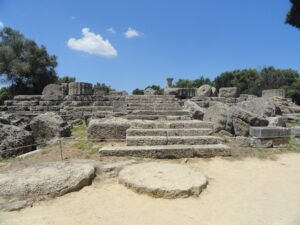
Unfortunately, there are no traces of the colossal statue of Zeus, but less than 100 meters to the west, archaeologists have identified the workshop in which it was made in the 5th century BCE by Phidias, an Athenian sculptor who was famous even in his own lifetime. Interestingly, his workshop was constructed with the same dimensions as the interior of the temple, but the structure was later converted into a Byzantine church.

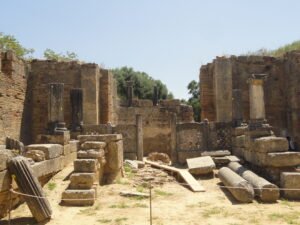
Another important temple at Olympia was the one dedicated to Zeus’s wife, Hera.
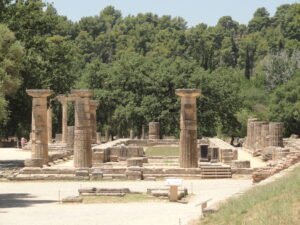
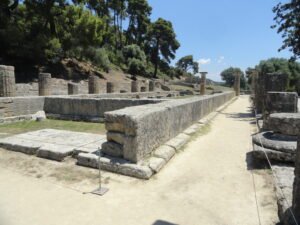
Since 1936, Olympia has kept its connection to the spirit of the games by providing the Olympic flame, which is lit during a ceremony at the altar in front of the Temple of Hera and carried to the site of each modern Olympic Games by a relay of runners with torches, the last of whom arrives just in time for the opening ceremony.
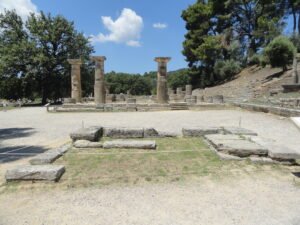
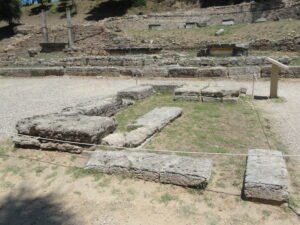
Next to the Temple of Hera stands what is left of the Philippeion, a tholos structure built by King Philip of Macedon.
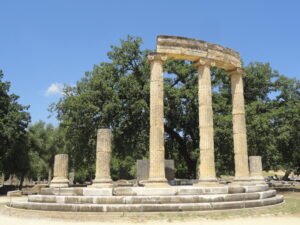
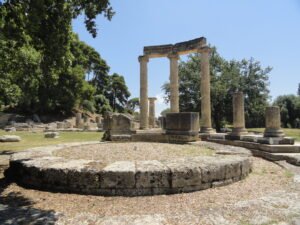
The former site of the stadium at the eastern edge is a fascinating spot to visit. After all, this is where so many athletes over so many centuries won glory for themselves and for the cities they came from.

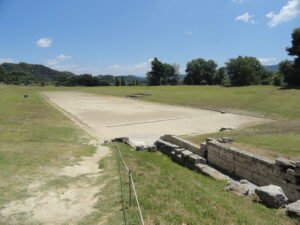
Listed above are just some of the main structures to be found at Olympia. There are many, many more as the site is incredibly large and crowded with rockpiles.
As Olympia was a sacred place visited by many important and wealthy people throughout the ancient Greek world, it is natural that many priceless treasures were left there as gifts and offerings. And as an important place that was well funded and taken care of, there were also many valuable works of art decorating the facilities there. Many of these precious artifacts can be seen at the Archaeological Museum of Olympia, which is next to the site. Among them are famous pieces of Classical art, such as Praxiteles’s statue of Hermes holding the infant Dionysos and Paionios’s Nike (Victory) statue. There is also an interesting depiction of Zeus carrying off Ganymede to Olympos.
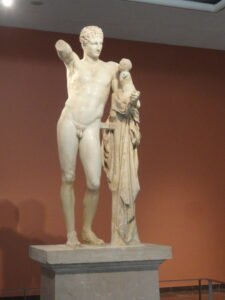
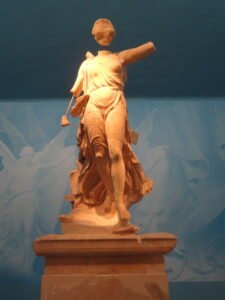
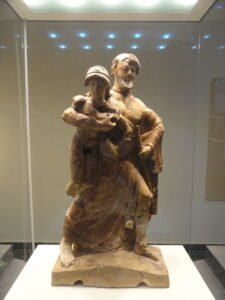
Other important statues are the ones that were once crowded into the east (left, depicting the mythical chariot race between Pelops and Oinomaos) and west (right, depiciting the Centauromachy) pediments of the Temple of Zeus.
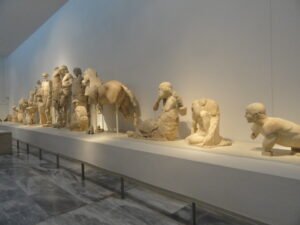
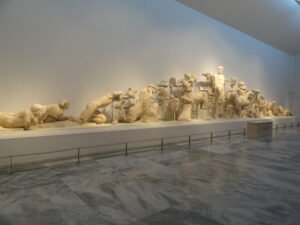
The museum also has an impressive collection of weapons, no doubt offered at the sacred sites of Olympia as dedications to Zeus.
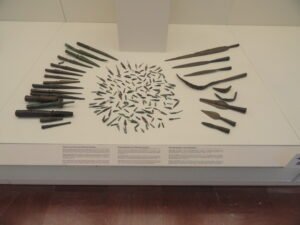
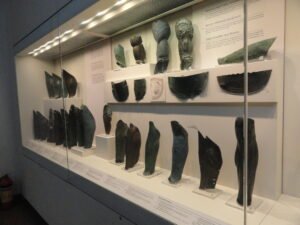
Certainly, the most awe-inspiring military offering is a 5th-century-BCE bronze helmet that was deposited here by a warrior as a gift to Zeus in thanks for an important victory. What makes this helmet particularly special is that not only was it inscribed with a dedication, but also that the warrior identified himself. His name was Miltiades, the Athenian general who defeated the Persians at the Battle of Marathon in 490 BCE, and this must be the helmet he wore during the battle. And on display next to it is another helmet from Marathon — a Persian helmet with an inscription explaining that it was an offering from the victorious Athenians who brought it to Olympia as a trophy for Zeus.
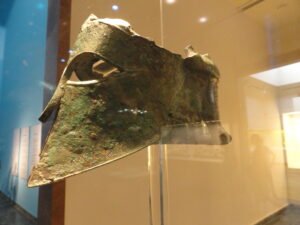
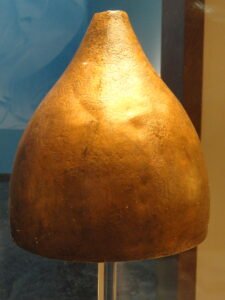
Tips for the Visitor
In antiquity, the ancient city of Elis was established 35 km northwest of Olympia to serve as the capital of this region of Greece in which the population was traditionally spread out in small communities rather than concentrated in large cities, but today the capital of the modern region of Elis is Pyrgos. If you are traveling to Olympia by public transport, you will normally need to get to Pyrgos first. From the central bus station there, you can get a bus to Olympia that takes around 30 minutes, depending on how many stops it needs to make along the way. There is also a train — one of the very few still operating in the Peloponnese — that makes its run a few times a day between Olympia and Katakolo (a port of call for cruise ships), stopping in Pyrgos on the way.
There are buses to Pyrgos from many other cities in the Peloponnese, and also from Athens, which takes 4 to 5 hours depending on whether you get the express bus. Note that pyrgos means “tower” in Greek, so there are many places that have this name; be sure you get a ticket to the right one. While you’re in Pyrgos, check out the small but interesting archaeological museum there.
Tickets cost 12 euro and include the archaeological site and two museums — the Archaeological Museum of Olympia and the Museum of the History of the Olympic Games. The village of Archaia Olympia (“Ancient Olympia”), next to the site, is very tourist-oriented and has a lot of options for food, accommodation, and souvenir shopping.
Location Map
